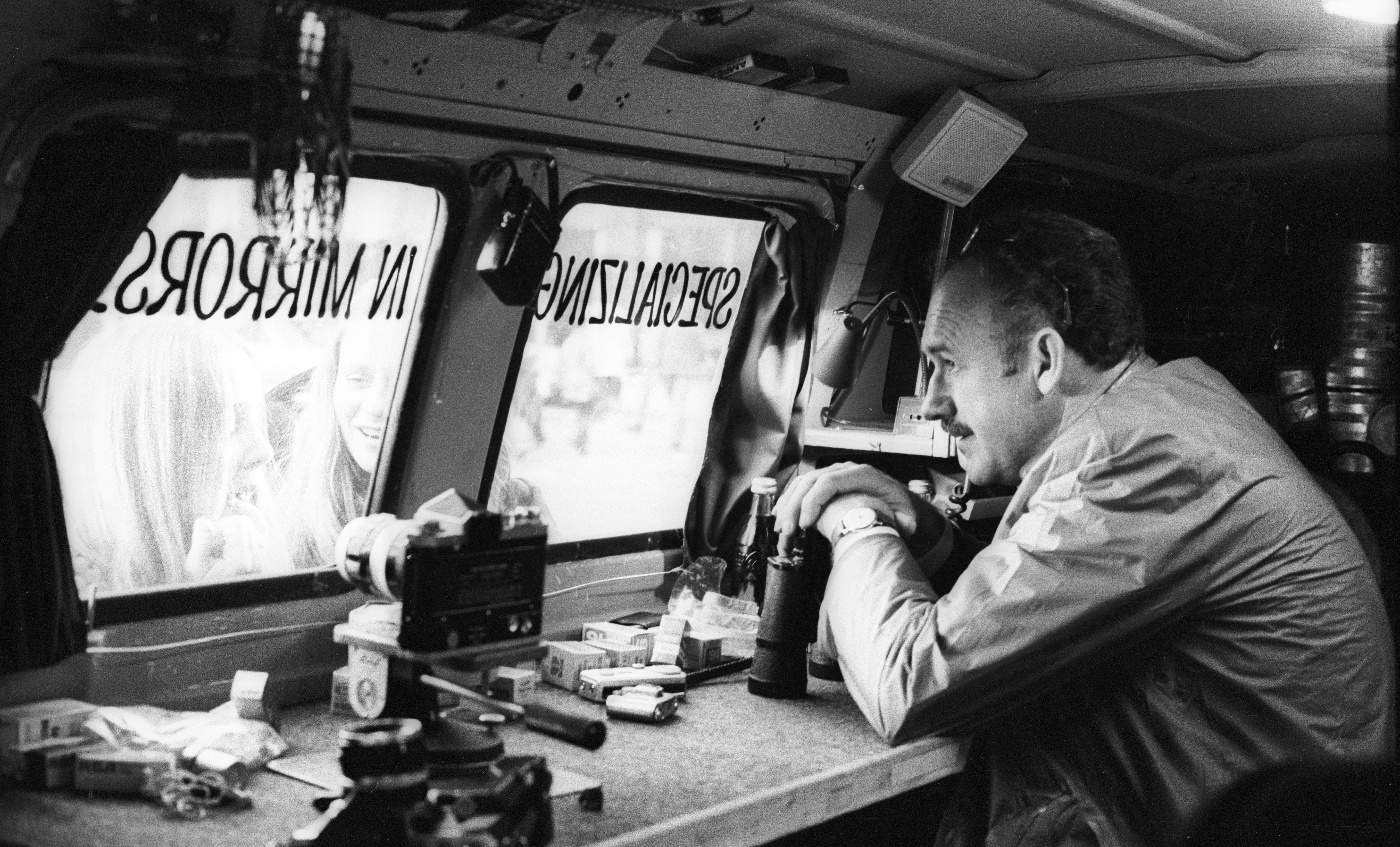
"The Price of Listening" by Robert Meyer Burnett
Francis Ford Coppola’s The Conversation (1974) remains a masterful exploration of surveillance, isolation, and the moral complexities of eavesdropping. Gene Hackman stars as Harry Caul, a reclusive surveillance expert who makes a living by secretly listening in on the private conversations of others yet remains emotionally detached from his own life. As the film progresses, Caul develops an obsession with a recording of a seemingly innocuous exchange between a couple, leading him to question the ethical and personal consequences of his work. Coppola’s precise direction creates a quiet, claustrophobic atmosphere, the tension building not through action, but through the psychological unraveling of the protagonist. The film’s minimalist style reinforces the theme that technology, while designed to connect, instead isolates and distorts human interaction, turning intimate moments into cold data—a prescient message from 50 years ago made even more powerful today.
The film’s central conflict lies amidst the tension between detachment and empathy. Caul thrives on eavesdropping on others, picking apart their lives, but is himself incapable of connecting meaningfully with anyone else. Drawn more deeply into the mystery of the couple’s conversation, his detachment gives way to paranoia, and he begins to question his role in the lives he monitors. Coppola’s use of silence and space is critical in building this sense of unease as the film lingers in the quiet gaps between spoken words. What is left unsaid can be just as revealing—and dangerous—as what is spoken aloud. In this way, The Conversation becomes not just a thriller, but a meditation on the emotional toll of surveillance, both on those being surveilled, and the observer himself.
Astonishingly, The Conversation came out in the spring of 1974, the same year as Coppola’s masterwork The Godfather Part II, which was released just days before Christmas. Just eight months apart, these films highlight Coppola’s unparalleled creative genius during that period. While The Godfather Part II explores themes of power, family, and moral decay, The Conversation takes an almost solitary look into complexities of the modern world. For Coppola to write and direct both films in such a short time, each with its own unique style and thematic depth, testifies to Coppola’s remarkable ability to navigate vastly different cinematic terrain, solidifying his place as one of the most versatile filmmakers in the history of cinema.
A half century later, with technological advances only dreamed of at the time of release, The Conversation remains enduring for its portrayal of the ethical and existential dilemmas that arise from living in a world where privacy is compromised. Caul’s growing obsession with the couple’s conversation reflects a deeper moral crisis—the more he listens, the more he loses his ability to distinguish right from wrong. The film’s haunting conclusion leaves us with the unsettling idea that surveillance, once it becomes a way of life, can strip away not only our privacy but our sense of self. Hackman would later reprise a very similar role in Tony Scott’s Enemy of the State (1998), playing a former surveillance expert once again drawn into a web of spying and government intrigue. While Enemy of the State is a fast-paced action film, many see it as an unofficial sequel to The Conversation, with Hackman’s character continuing to explore the moral consequences of living in a world where privacy is increasingly compromised by technology. The thematic continuity between the two films underscores how the fears about surveillance raised in Coppola’s film have only grown more relevant in the modern age.